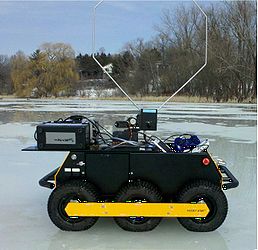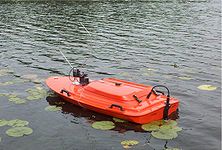The common carp is an invasive species of fish which poses a significant threat across the Midwest. This species pollutes lakes by uprooting plants and releasing large quantities of harmful nutrients while bottom-feeding. It is important to track and control the species. Sorensen lab at the University of Minnesota has discovered that when carp form huge shoals they can be netted and removed with very high efficiency. However, finding and controlling these aggregations from manually using conventional boats is expensive and nearly impossible.
We lead a collaborative project funded by the National Science Foundation to build a network of robotic devices which can be used for locating and tracking radio-tagged carp. The project brings together roboticists, computer systems experts, and mathematicians as well as fish biologists to tackle many challenging research problems ranging from optimal search and active tracking with multiple robots to energy-efficient operation as well as understanding fish behavior. Stay tuned for more on our results! In the mean time, you can check out the videos and publications on this page or contact Professor Volkan Isler for more information.
System


Our system is built on a combination of two commercial platforms: the six-wheel differential drive Husky A100 from Clearpath Robotics for winter operation, and robotic boats used in summer. The overall system comprises of:
- EEE PC running Ubuntu with ROS
- Garmin GPS 18x for robust waypoint navigation
- Radio antenna mounted on pan-tilt unit
- Radio telemetry equipment from ATS-Track.
It is designed to search a lake until it detects a nearby fish then localize the fish using bearing measurements. We are also addressing the problem of long-term autonomy by incorporating solar-power-aware path planning. We address several problems, which include the design of a robust mobile sensor network, Optimal Coverage, Adaptive (or "active") Tracking, and Optimal Search.